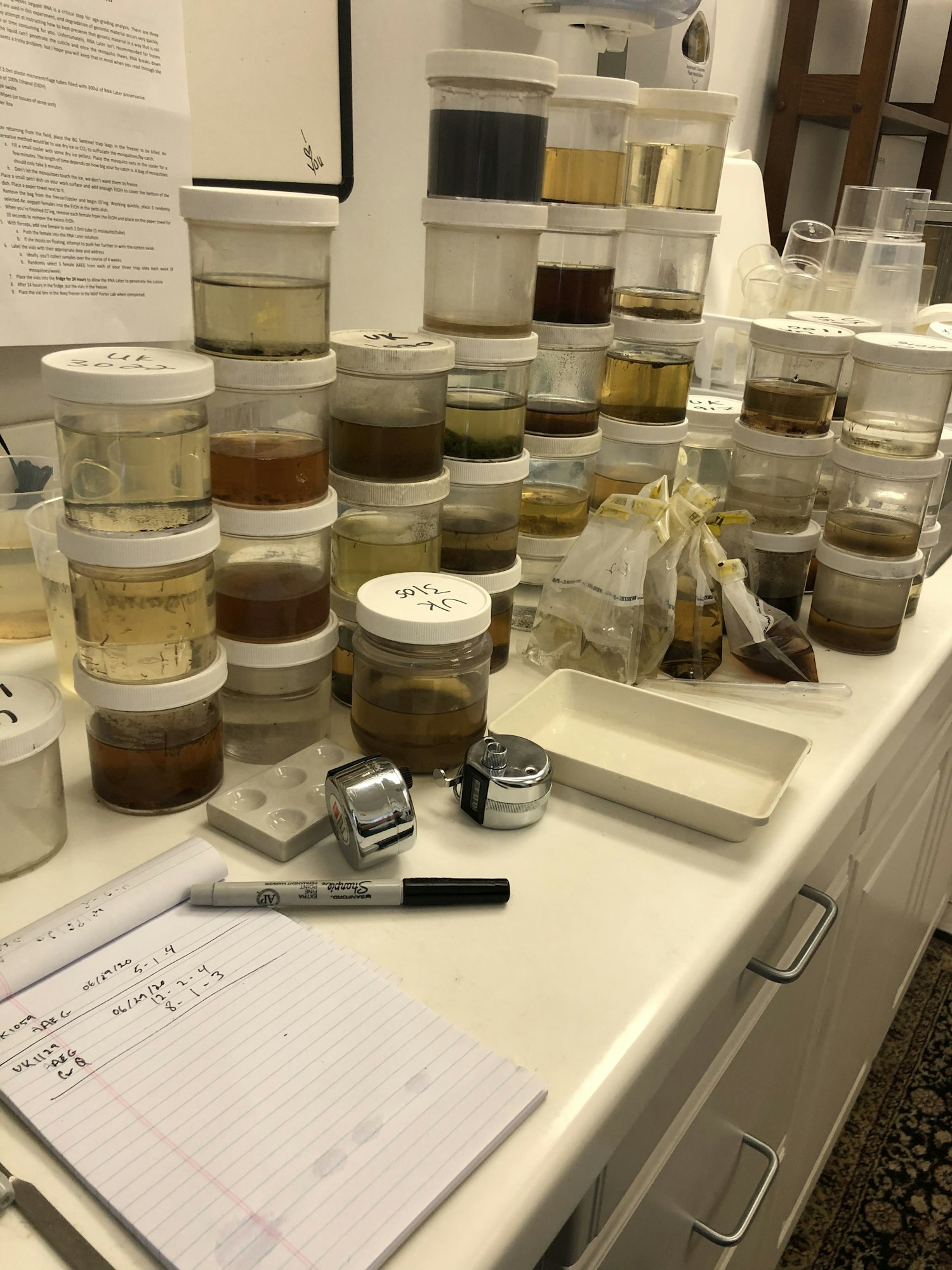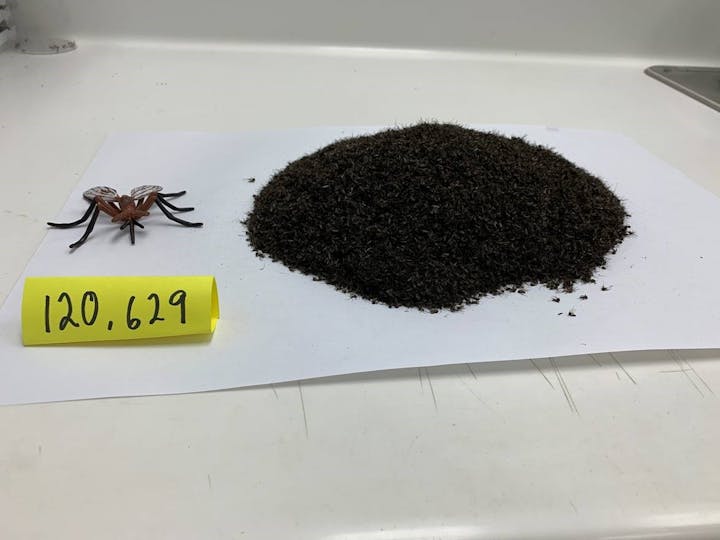Control Methods
Controlling the diverse and sometimes robust mosquito population in the beautiful and environmentally sensitive Florida Keys is no simple task.
The Florida Keys Mosquito Control District uses four fundamental control methods during daily operations:
- Source Reduction
- Larval Control
- Adult Control
- Public Education/Outreach

In the Florida Keys, aerial applications of mosquito control products are essential for success.

FKMCD uses a team of trained Inspectors Identify and eliminate current and potential mosquito habitats.

Inspectors often identify and determine maturity of larval mosquitoes.
.JPG?ixlib=rb-1.1.0&w=2000&h=2000&fit=max&or=90&s=3226dccfbda884cd523a0ace8c9d9ebc)
Any item that can hold water can often be found producing mosquitoes.

Lab samples ready for further testing/identification.

Uncovered Trash cans can be prolific mosquito producers.

Ground mosquito inspection is considered the 'front line' of effective mosquito control.



.JPG?ixlib=rb-1.1.0&w=2000&h=2000&fit=max&or=90&s=3226dccfbda884cd523a0ace8c9d9ebc)




.JPG?ixlib=rb-1.1.0&or=0&w=720&h=720&fit=max&auto=format%2Ccompress&s=f38abab9ec2fb01b19c0f3645f9cfcd7)

